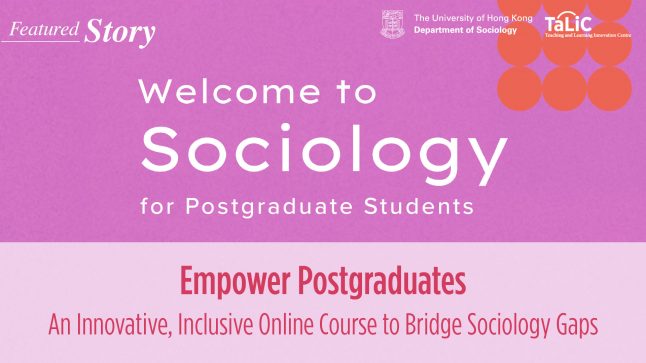Effective communication and collaboration is one of HKU’s educational aims. In our healthcare-related curricula, we strive to offer students a range of opportunities to work together and build a professional network on campus. One recent attempt was a UGC-funded programme entitled “Interprofessional Team-based Learning (IPTBL) for Health Professional Students,” launched in January 2016.

The main purpose of IPTBL is to facilitate deeper learning experiences and interactions of health professional students in their roles and responsibilities; and to enable them to actively learn in small groups. During the session, teams of students from Medicine, Pharmacy, Nursing, Chinese Medicine and Biomedical Sciences from HKU and PolyU completed tests based on suggested readings, first individually and then as a cross-disciplinary team. Team members then worked together on case-based application exercises. The way teams were arranged reflected the realities of the healthcare sector, where professionals from a variety of disciplines work together to improve the well-being of patients.

“It’s a great way for healthcare professionals to meet when they are studying, and then build relationships, friendships, so that when they go to the HA [Hospital Authority] or the community, they are familiar with each other, and they know how each other works [and] thinks,” said Dr. Alan Worsley, who served on the teacher panel as a Pharmacy content expert.
In fact, teachers also mirrored the process their learners went through in the face-to-face sessions when they collaboratively examined clinical cases and addressed questions from students.

Collaborative learning in the IPTBL programme is further enhanced by the use of the Learning Activity Management System (LAMS), which provided instant statistics that help facilitators check the progress of individuals and teams. The system also came with an online discussion forum designated for interactions after the face-to-face sessions. According to the Principal Investigator of this project, Dr Lap Ki Chan (Li Ka Shing Faculty of Medicine), “in each of the sessions of this team-based programme we’re talking about 500 to 600 students. Without the use of technology it is difficult to manage such a large number of students.” TELI collaborated with the IPTBL team to ensure that the LAMS functioned smoothly and that the face-to-face sessions were conducted effectively.
More than 500 students across 7 programmes from 2 universities participated in the first two IPTBL days on January 16 and February 20, 2016. The programme is growing continuously and is expected to serve over 1000 students in total from 12 programmes by 2017. This would be the first large-scale interprofessional education programme in Hong Kong.











